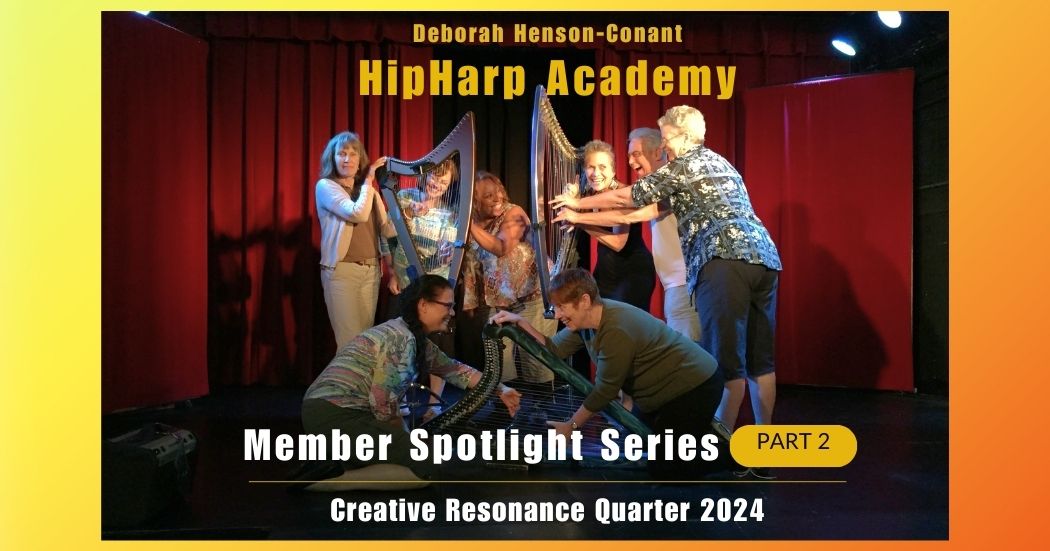
Welcome to Hip Harp Academy Member Spotlight Series: Creative Resonance Quarter (Part 2 of 3)
For this year’s first quarter, Hip Harp Academy Members poured out their creativity to the next level, putting their creative expression into forms so that they can share it with others. And now, I’m sharing them with you!
Scroll down to see the projects – but first, take a moment to think about the power of people sharing their creative PROCESS instead of a PERFECTED “PRESENTATION.” What you’ll learn from these videos – and the mini-interviews in which they share their process – will be far more inspiring to your creativity than someone sharing a trendy video with five gazillion hits. This is creative process – and in these shares, you get to glimpse into the process of other people like you and HOW they overcame their own blocks to accomplish their next creative goal.
The Hip Harp Academy Members’ Final Beginning Project
How to enjoy these wonderful video shares: Enjoy the creativity and the willingness to share. Think about the fact that each of these videos is a unique creation – none of these musicians are playing written sheet music – they’ve created these arrangements by learning the fundamentals of arrangement and improvisation and putting them into play – literally – in their own creations. And notice how different each video and each project is from the others … and yet they were all taking the exact same class.
This is the power of learning the tools of self-expression and creativity.
“Final-Beginning” is a term we use remind ourselves that these are not meant to be “Final” projects. If we worry about making them ‘FINAL’, we’d never share! Instead, we learn to embody a moment of completion as a new beginning: to acknowledge an accomplishment as something that opens up a new door, a new place to stand in, a new level of confidence – not the FINAL – it’s not the END … but the new BEGINNING.
So think about that as you watch them and read their own account of their personal creative journey in creating each video by clicking the toggle beneath each video – and I encourage you to do that if you really want to be inspired.
Some of the players have played for years, and even decades – some have come to the harp as adults – some even as a retirement gift for themselves. We’re a community connected by a commitment to creative expression. Every week we meet for masterclasses and training, and during the week we practice the new ideas and the willingness to be vulnerable, authentic and self-expressed with our instruments, our voices and ourSELVES.
So be inspired by that commitment, let it infuse your own life – and if you play the harp, come join us at Hip Harp Academy.
Joyce:
I have become more confident in using what I have and can do and not compare it to others that have more technique.
[A note from Deborah: Joyce’s project is an amazing example of what I’d call ‘creative resourcefulness’ – she used every element of this quarter to build her project – she built her characters from the Splotch Drawings, used the Snippets for her music, and her character’s theme song was a song we learned together. It was so fun to see how she used her unique creativity to pull those all together into a story with character, meaning and music!]
Joyce's insights about this project
Describe your “Final-Beginning” project.
This is the vision story of the feeble old woman who shares her resonance with the villagers no matter what the circumstances.
Describe your written materials – if there’s anything in particular you want to say about it to help people know what they’re looking at, add that here.
The story uses the harp to help set scenes and the characters as well as the theme of the story.
What principles from this course or from chats did you use to develop, perform, and record this project – and how did they play a part in your process?
I started with the splotch drawings to come up with the characters and the scene of the mountain and the woods. I used parts of the warmups and ideas for sounds of the characters and scenarios. I used the sprint writing to come up with the story. I used “you have a voice” as the theme for the story.
Give a short description of what it took for you to be able to play what you did – both logistically and emotionally.
I had to practice the warmups and the “You have a voice”. I am not a singer so this also took me out of my comfort zone as a challenge.
What freedoms and blocks within yourself did you connect with (or struggle with) in the process?
The length of the story just happened as I moved through the scenes. I kept rehearsing, but needed to determine that this current version was lift off for where I was in pulling everything together and trying to add in the deconstruction of the characters.
What challenges did you meet while connecting with your own freedom of expression in this project?
I had to explore all the different improvisations of the chord progression of You have a voice.
What other parts of your life were impacted by what you learned in this class, and how?
I think I have become more confident in using what I have and can do and not compare it to others that have more technique.
What were your personal “Ahas”?
I did it! I can do it! I kept trying to employ all that I had learned this quarter into my project.
Is there anything else you want people to know when they watch your video?
The story came alive as I progressed.
Monika:
It took me a lot of courage to sing and show the absolute imperfection and the weaknesses.
Monika's insights about this project
Describe your “Final-Beginning” project.
as final beginning I sang “You have a Voice” with the simplest accompaniment.
What principles from this course or from chats did you use to develop, perform, and record this project – and how did they play a part in your process?
I could not do a creative project using the strings because I did not find any creative impulse in me to begin with. Then I gave up on creativity and did a lot of practicing (warm-ups, staircase …) in this quarter.
What moved and touched me most in the last weeks was DHC’s song “You have a Voice” and so I tried to sing and play it as a final. It is the first time I sing with the harp.
Give a short description of what it took for you to be able to play what you did – both logistically and emotionally.
It took me a lot of courage to sing and show the absolute imperfection and the weaknesses
What freedoms and blocks within yourself did you connect with (or struggle with) in the process?
The freedom lays in the decision to hand it in although it is no improvisation, no story or any other creative act
What challenges did you meet while connecting with your own freedom of expression in this project?
the challenges were the voices from the demon pot and the shame that came with them. Not to give up the whole thing but follow the longing this songing is triggering in me.
What other parts of your life were impacted by what you learned in this class, and how?
I try more to trust the process that change will come over time when I (and we all) engage in something. That makes me more patient with me and others and more hopeful concerning the many problems in the world.
What were your personal “Ahas”?
It helps to videotape while playing the song again and again and choose afterwards what version to take
Is there anything else you want people to know when they watch your video?
many thanks to all of you for your commitment and your openness to share and you, Deborah, for the great inspiration and this song.
Bonnie Berk:
I realized that I oftentimes just want to ‘get things done”. Trying to be a human doing instead of a human being. This project made me slow down and really take my time.
Bonnie's insights about this project
Describe your “Final-Beginning” project.
A Mourning Meditation
Created for people who have experienced a loss of a loved one, whether it’s a friend, relative or pet. This is just a sample of a meditation that could last as long as needed depending on the needs of the individual.
What principles from this course or from chats did you use to develop, perform, and record this project – and how did they play a part in your process?
I used some snippet ideas as well as ideas shared from other members of the class. When i submitted my half-bake, I received feedback to develop my own music to accompany this meditation rather than use already published music. That took me on a journey of discovering my own musical style to fully express myself.
Give a short description of what it took for you to be able to play what you did – both logistically and emotionally.
I loved when DHC said to “Practice being imperfect” and then you will just keep getting better. And that was my mantra as I developed this project. I tried to embody the character and the role of an ideal mediation harpist and just let myself move into that space.
What freedoms and blocks within yourself did you connect with (or struggle with) in the process?
I realized how judgmental i was of myself and tried to work through it by just giving myself a break. A lot of self talk went on,,, “believe in yourself” ” ” Don’t be so hard on yourself” “This is not about you! It’s about the people you are playing for.”
What challenges did you meet while connecting with your own freedom of expression in this project?
Playing around with the many ways to play a chord.
Really listening to music and making sure it was how i wanted to express myself.
What other parts of your life were impacted by what you learned in this class, and how?
I am less judgmental of both myself and others. I feel I have developed more “grace.” I am more attentive to people when they speak instead of planning what I want to say next. I seek to understand before striving to be understood. I am also more patient with myself and others.
What were your personal “Ahas”?
I realized that I oftentimes just want to ‘get things done”. Trying to be a human doing instead of a human being. This project made me slow down and really take my time. The video I submitted is just the beginning and I know I will be working on it for a very long time. It may never truly be completed, but will always be in the process of “becoming.” And that is what I am working on personally, always trying tro become the person i truly want to be!
Is there anything else you want people to know when they watch your video?
This is just a short sample of a meditation that could last longer if needed. i also realized that even without the words, I could use this piece of music for many other poems and settings. So while i developed it for this particular meditation, it has so many other uses and that made this project so worthwhile and more fulfilling than i could have imagined!
Cherie Maffey:
I have gained more confidence with both singing and talking while playing the harp. I found that I could actually do this for the first time in front of people. I recently played and sung in front of 45 musicians and was able to have them sing along with me.
Cherie'sI insights about this project
Describe your “Final-Beginning” project.
This my attempt at the Phoenix. The background is a picture I have made of the Phoenix. I am telling the story with music.
What principles from this course or from chats did you use to develop, perform, and record this project – and how did they play a part in your process?
I felt the Phoenix embodied the 7 strings of passion. I used what you had taught in one of the snippets. I made the background picture of the Phoenix.
Give a short description of what it took for you to be able to play what you did – both logistically and emotionally.
I used the 7 strings of passion. From the time you showed us the Phoenix in class I just had to do it! The 1st string of passion – impulse, and I loved the structure & character – the drama of the music and story. I practiced talking and playing to tell the story.
What freedoms and blocks within yourself did you connect with (or struggle with) in the process?
I had struggled with talking and playing but with doing the practice of practising string of passion I was able to achieve this. It has been such a help being able to talk and play as I was recently doing the calypso game and able to say the chord names for other musicians to play along.
What challenges did you meet while connecting with your own freedom of expression in this project?
I used the deconstruction string of passion to simplify parts of the tune so I could tell the story with the music. Using glissandos was easier than lots of notes and this was suggested in my feedback from my half bake.
What other parts of your life were impacted by what you learned in this class, and how?
I have gained more confidence with both singing and talking while playing the harp. I found that I could actually do this for the first time in front of people. I recently played and sung in front of 45 musicians and was able to have them sing along with me.
What were your personal “Ahas”?
It has just recently dawned on me with this course that I like music that I remember as a child. My brother played boogie woogie on the piano, my Mum did latin American dancing, my Dad played blues on the harmonica and my sisters did ballet. I love all this music and wondered why other people weren’t interested in playing this music. This course has given me a greater understanding of WHO I Am.
Is there anything else you want people to know when they watch your video?
I hope they enjoy the video and the story.
I have attempted to put in more movement and expression with my playing. Like opening my arms at the end. I would like to explore more expression with my playing.
Joke Verdoold:
It becomes more easy to accept that ‘perfect’ and I are not acquainted.
Joke's insights about this project
What principles from this course or from chats did you use to develop, perform, and record this project – and how did they play a part in your process?
Simple if just fine! The goal is reaching out to the listeners. There was no time to go to a process, it just had to go in 1 take or not at all.
Give a short description of what it took for you to be able to play what you did – both logistically and emotionally.
I used 2 themes that I tried to intertwine and develop minimally to be just enough to support the story.
What freedoms and blocks within yourself did you connect with (or struggle with) in the process?
To dose the strength of my fingers on the strings, to get the soft and loud sounds on the places I wanted them.
What challenges did you meet while connecting with your own freedom of expression in this project?
To pronounce clear and wel to understand, without loosing the expression.
What other parts of your life were impacted by what you learned in this class, and how?
None
What were your personal “Ahas”?
It becomes more easy to accept that ‘perfect’ and I are not acquainted.
L.R.:
This was my first foray into writing a story with music. It was aided by the Academy inspiring more creative thinking and playing with character, feeling freer to improvise with different sounds, and feeling safer to share a difficult story and share a composition that is imperfect.
LR's Insights about this Project
Describe your “Final-Beginning” project.
Q1 Creative Resonance Final Beginning Project: story of my past 30 years in a musical nutshell.
What principles from this course or from chats did you use to develop, perform, and record this project – and how did they play a part in your process?
This was my first foray into writing a story with music. It was aided by the Academy inspiring more creative thinking and playing with character, feeling freer to improvise with different sounds, and feeling safer to share a difficult story and share a composition that is imperfect. Much gratitude to Deborah and the other members of the class who share so much of themselves and their creativity—very inspiring!
Give a short description of what it took for you to be able to play what you did – both logistically and emotionally.
It took courage to face a difficult part of my past and to share it. Logistically, I had to learn how to use my new video camera, set the backdrop, and experiment with positions and camera angles.
What freedoms and blocks within yourself did you connect with (or struggle with) in the process?
I noticed how much I put the needs (and interruptions) of my household, family, and pets over my desire to connect creatively with myself and my harp. The project motivated me to set some boundaries and also learn to use my new camera which I’d been avoiding doing even though I love taking pictures. I dislike learning new technology. It also motivated me to revisit a couple of pieces I wrote in the past.
What challenges did you meet while connecting with your own freedom of expression in this project?
I wanted to memorize the script and music so I could tell the story more smoothly and look at the camera more, but it was difficult within the time I had, so I didn’t.
What other parts of your life were impacted by what you learned in this class, and how?
I took a big step to “cut a cord” tying me to that difficult past. I have applied more creative thinking to other areas of life.
What were your personal “Ahas”?
I felt that working on and telling my story, even just to myself, had a cathartic effect. And I really must do more harp exercises to gain the fluency I want for better self-expression. Learned it’s okay to share that which is imperfect or incomplete, in other words, I don’t have to be perfect ( lifelong hangup).
Is there anything else you want people to know when they watch your video?
This is a musical synopsis of the past 30 years of my life. The first 3 minutes of this 7-minute video end with sadness. The remainder of the story is happy. I would have re-recorded it with a camera angle that exposed my face more throughout, to see if I liked that better, but it was an emotionally difficult process and I liked how this angle highlighted the forest backdrop and the wood of my harp and showed my better side.
Tara:
I am finding reinforcement of the idea that I do have a unique perspective to share and I might be able to make someone’s day just a little better if I open myself to that possibility.
Tara's insights about this project
Describe your “Final-Beginning” project.
This is my original song, “The Fezupod,” about a new friend who is full of surprises. It has several verses that build up to a message about the value of odd friends, which makes the video rather long (6′ 41″). I recommend watching from the beginning.
What principles from this course or from chats did you use to develop, perform, and record this project – and how did they play a part in your process?
This is my original, whimsical song about a new friend, the fezupod, who brings all sorts of surprising thoughts and actions. The lyrics tell a very specific story that I wanted to come across. I tried to connect with my audience through sound and sight, giving consideration to facial expression, body language, and costuming. I also added, after receiving ideas on my half-baked project, a simple repeated phrase at the end of the chorus that could serve as a sing-along part. Since the song’s verses are so rhythmically free, I tried to keep the accompaniment on the harp fairly sparse there. When I struggled to find the “right” approach, I often found DHC’s supportive words in my head: “You’re making music, and no one cares HOW you do it.”
Give a short description of what it took for you to be able to play what you did – both logistically and emotionally.
Even though I have a written version, I found I needed to be off the page for recording. That made it extra-challenging to remember/envision which chords my fingers needed to find, especially since I’m still open to changing the chords. But this is, after all, a final-beginning project, so at this point, I’m aiming for “smooth enough” rather than “locked in.” I did have to record myself quite a few times before I achieved my aim.
What freedoms and blocks within yourself did you connect with (or struggle with) in the process?
It took me a while to finalize the lyrics, but that seemed to be where most of the struggle was. I had a serious message in mind, but I wanted to keep it happy and fun. When I got to adding the music, I still had to try various ideas and make provisional attempts, but I felt confident that I would come up with something eventually. There is a big responsibility to creating both words and music, but also a lot of freedom because I don’t have pressure to conform to someone else’s interpretation.
What challenges did you meet while connecting with your own freedom of expression in this project?
I often find it challenging to shift my gaze to the audience in mid-song, but I felt it was really necessary in this case. I think the more I practice that, the easier it will become.
What other parts of your life were impacted by what you learned in this class, and how?
I am finding reinforcement of the idea that I do have a unique perspective to share and I might be able to make someone’s day just a little better if I open myself to that possibility.
What were your personal “Ahas”?
Finding different ways to practice the same material is very useful to me. For example, when I was having difficulty remembering the chord progression, I sang the melody with chord indications rather than with the lyrics. I also tried temporarily limiting my accompaniment to just the roots of the chords (single notes).
Is there anything else you want people to know when they watch your video?
Inspiration can spring up in unlikely places. In a game I was playing, I drew seven letter tiles: F, E, Z, U, P, O, D. They really seemed to beg for meaning as a single word.
My video is rather long (6’ 41”), but I wanted to make the full story available for anyone who wants to hear it.
Harpists Who Dare!
Are you ready to free yourself from the notes on the page?

PROJECTS & PERFORMANCES:
FOR HARPISTS:
- Join Hip Harp Academy
- Harp Time Live (FREE Weekly Playalong)
- FREE Resources

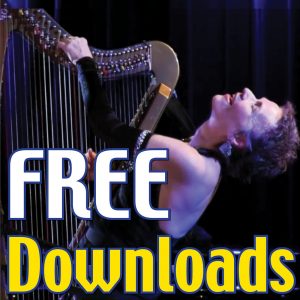
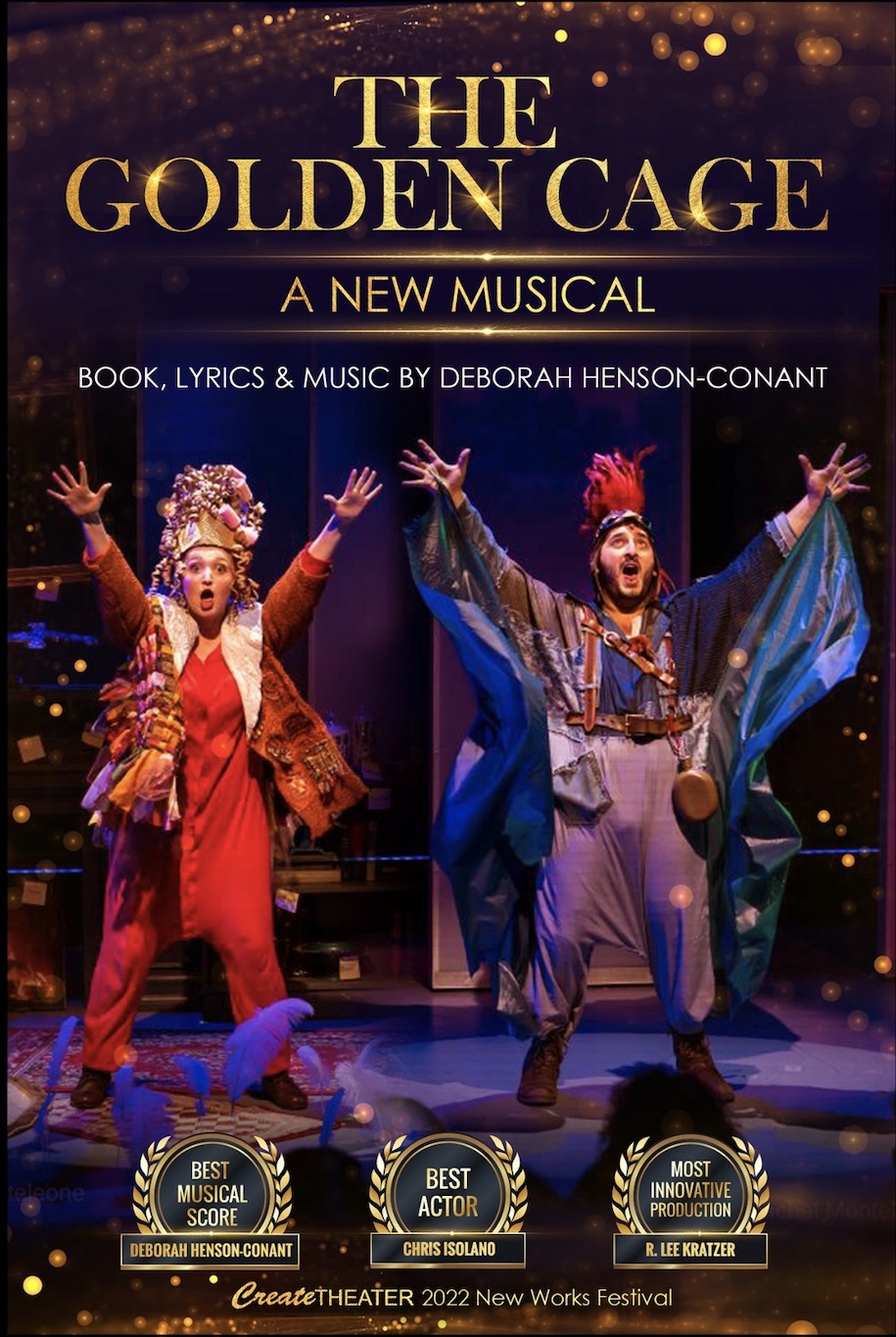
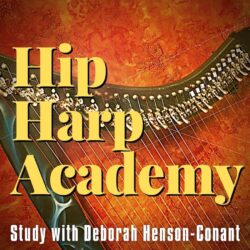
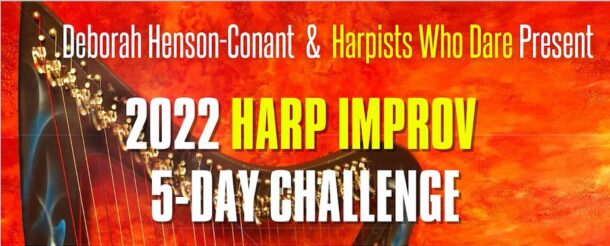
Join for Freebies, Stories & News
Join to get weekly-ish emails with stories, videos & events like concerts & classes
Yay! You should get my next newsletter within the next 7-10 days. I'm so happy we'll be in touch!
I won't ever share your email address with others - and you can unsubscribe anytime, tho most people say they really enjoy these weeklish emails.